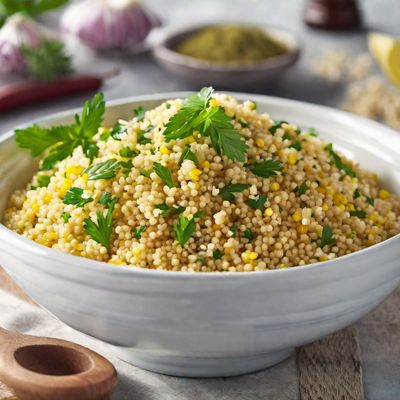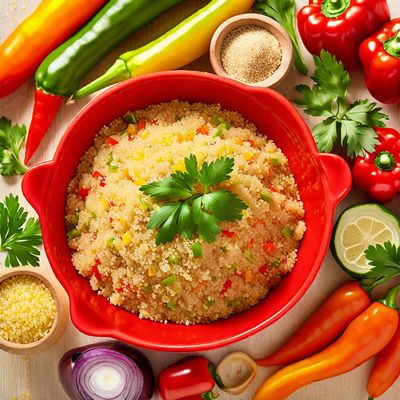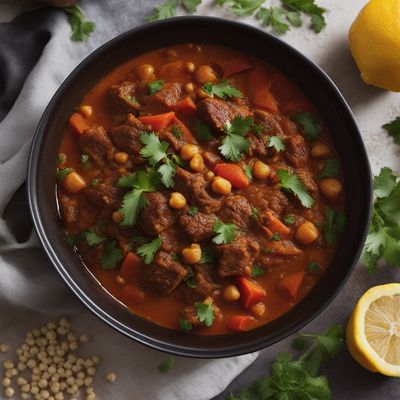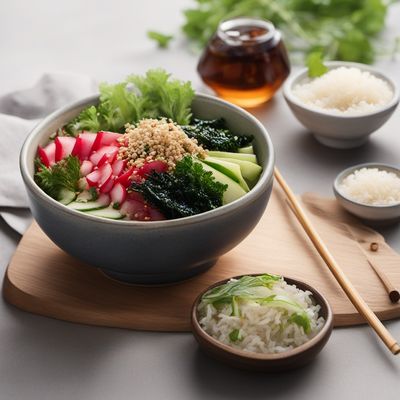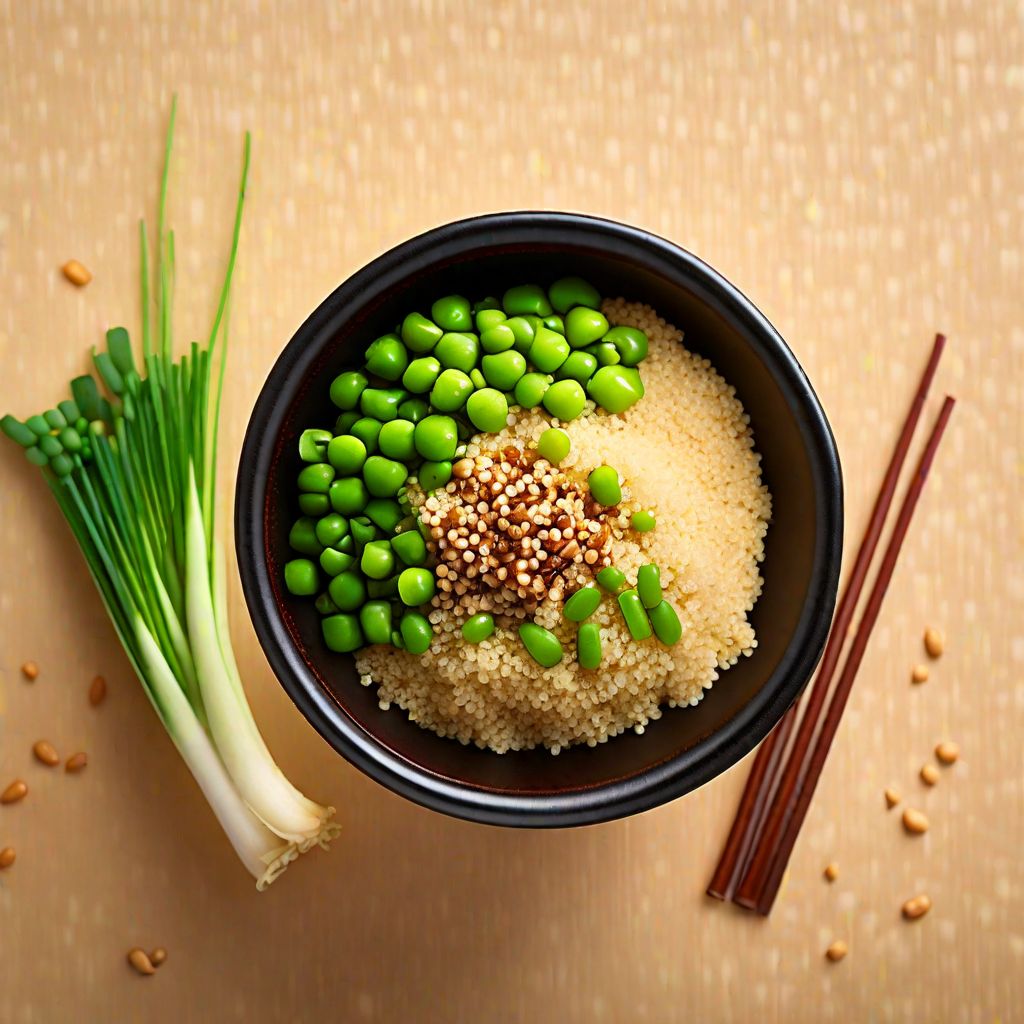
Recipe
Japanese-style Couscous
Umami-infused Couscous with Japanese Flavors
4.7 out of 5
In the context of Japanese cuisine, this recipe takes the traditional North African dish of couscous and infuses it with the unique flavors of Japan. The result is a delightful fusion of textures and tastes, combining the lightness of couscous with the umami-rich ingredients commonly found in Japanese cooking.
Metadata
Preparation time
15 minutes
Cooking time
10 minutes
Total time
25 minutes
Yields
4 servings
Preparation difficulty
Easy
Suitable for
Vegetarian, Vegan, Dairy-free, Nut-free, Gluten-free (if using gluten-free soy sauce and miso paste)
Allergens
Soy (in soy sauce and miso paste), Sesame
Not suitable for
Paleo, Keto, Low-carb, High-protein, High-fat
Ingredients
While the original North African couscous typically incorporates spices like cumin and coriander, this Japanese adaptation replaces those flavors with ingredients such as soy sauce, miso, and mirin. Additionally, the traditional vegetables used in North African couscous are substituted with Japanese vegetables like daikon radish, shiitake mushrooms, and edamame. We alse have the original recipe for Couscous (dish), so you can check it out.
-
2 cups (400g) couscous 2 cups (400g) couscous
-
2 1/2 cups (590ml) vegetable broth 2 1/2 cups (590ml) vegetable broth
-
2 tablespoons soy sauce 2 tablespoons soy sauce
-
1 tablespoon miso paste 1 tablespoon miso paste
-
1 tablespoon mirin 1 tablespoon mirin
-
1 tablespoon sesame oil 1 tablespoon sesame oil
-
1 cup daikon radish, julienned 1 cup daikon radish, julienned
-
1 cup shiitake mushrooms, sliced 1 cup shiitake mushrooms, sliced
-
1 cup edamame, shelled 1 cup edamame, shelled
-
2 green onions, thinly sliced 2 green onions, thinly sliced
-
1 tablespoon sesame seeds, for garnish 1 tablespoon sesame seeds, for garnish
Nutrition
- Calories (kcal / KJ): 320 kcal / 1340 KJ
- Fat (total, saturated): 6g, 1g
- Carbohydrates (total, sugars): 58g, 4g
- Protein: 12g
- Fiber: 8g
- Salt: 2g
Preparation
-
1.In a large bowl, combine the couscous and vegetable broth. Cover and let it sit for 10 minutes until the couscous absorbs the liquid.
-
2.In a small bowl, whisk together the soy sauce, miso paste, mirin, and sesame oil until well combined.
-
3.Heat a tablespoon of sesame oil in a large skillet over medium heat. Add the daikon radish, shiitake mushrooms, and edamame. Sauté for 5 minutes until the vegetables are tender.
-
4.Add the cooked vegetables to the couscous and mix well. Pour the soy sauce mixture over the couscous and toss until evenly coated.
-
5.Garnish with sliced green onions and sesame seeds before serving.
Treat your ingredients with care...
- Couscous — Fluff the couscous with a fork after it has absorbed the liquid to ensure light and fluffy texture.
- Daikon radish — If daikon radish is not available, you can substitute it with regular radish or jicama for a similar crunch.
- Shiitake mushrooms — Remove the stems before slicing as they can be tough and chewy.
- Edamame — If using frozen edamame, blanch them in boiling water for a few minutes before adding to the dish.
- Sesame seeds — Toast the sesame seeds in a dry skillet over medium heat for a few minutes until golden brown for enhanced flavor.
Tips & Tricks
- For added umami flavor, you can sprinkle some nori flakes or bonito flakes over the couscous before serving.
- Feel free to add other Japanese ingredients like pickled ginger or seaweed salad for extra depth of flavor.
- If you prefer a spicier kick, drizzle some sriracha or chili oil on top of the couscous.
- Leftover couscous can be refrigerated and enjoyed cold as a refreshing salad the next day.
- Experiment with different vegetable combinations such as adding thinly sliced cucumber or blanched spinach for variation.
Serving advice
Serve the Japanese-style couscous as a main dish accompanied by a side of miso soup and a small salad. It can also be served as a side dish alongside grilled fish or teriyaki chicken.
Presentation advice
Garnish the couscous with a sprinkle of sesame seeds and a few julienned daikon radish strips for an elegant touch. Serve it in a shallow bowl or on a plate to showcase the vibrant colors of the vegetables.
More recipes...
For Couscous (dish) » Browse all
For North African cuisine » Browse all

North African Spiced Carrots with Marsala
Moroccan-Inspired Marsala Carrots: A Flavorful Twist on a Classic Dish

North African-style Avocado and Shrimp Salad
Spiced Delight: North African Avocado and Shrimp Salad

Grilled Morcilla with North African Twist
Spicy Grilled Blood Sausage with Exotic North African Flavors
More North African cuisine dishes

Couscous (dish)
Couscous
Couscous is a traditional North African dish made from small steamed balls of semolina. It is a staple food in many countries in the region and is...
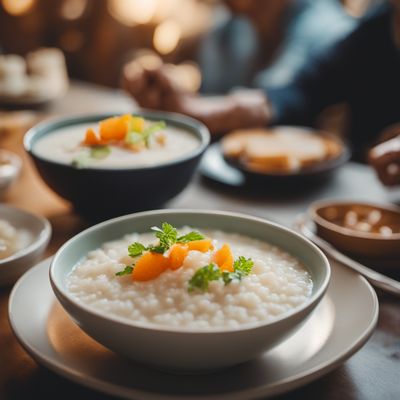
Babor
Rice porridge
Babor is a traditional dish from Algeria that is made from semolina flour. It is a hearty and flavorful dish that is often served for breakfast or...
More Japanese cuisine dishes » Browse all

Bonjiri yakitori
Chicken Tail Yakitori
Bonjiri yakitori is a Japanese dish made with chicken tail. It is a popular street food in Japan and is often served on skewers.

Yakitori
Yakitori is a popular Japanese dish that consists of skewered and grilled chicken. It is typically served with a variety of sauces and condiments.

Gari
Gari is a type of pickled ginger that is commonly served with sushi.
